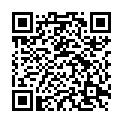|
|
|
| Module code: E2610 |
|
|
2V+2PA (4 hours per week) |
|
5 |
| Semester: 6 |
| Mandatory course: yes |
Language of instruction:
German |
Assessment:
Presentation (20%), project (80%)
[updated 08.01.2020]
|
E2610 (P211-0099, P211-0100) Electrical Engineering and Information Technology, Bachelor, ASPO 01.10.2018
, semester 6, mandatory course, technical
|
60 class hours (= 45 clock hours) over a 15-week period.
The total student study time is 150 hours (equivalent to 5 ECTS credits).
There are therefore 105 hours available for class preparation and follow-up work and exam preparation.
|
Recommended prerequisites (modules):
E2105 Digital Electronics
E2303 Electronics 1
E2401 Electronics 2
E2408 CAD in Microelectronics
[updated 07.02.2021]
|
Recommended as prerequisite for:
|
Module coordinator:
Prof. Dr. Albrecht Kunz |
Lecturer: Prof. Dr. Albrecht Kunz
[updated 10.09.2018]
|
Learning outcomes:
After successfully completing this course, students will have detailed, up-to-date knowledge about common circuit families. They will understand the differences between the different circuit families and can estimate and evaluate the limits and possibilities of the circuit families with the help of numerically generated simulation results. This will help students select suitable technologies for specific requirement profiles and thus, enable them to successfully work on future projects later in their careers. They will able to use the results of numerical simulations to their advantage in the run-up to technological implementations.
[updated 08.01.2020]
|
Module content:
1. Introduction to simulation technology using the simulation tool OrCad Pspice from Cadence 2. Transistor models in Pspice, basic circuits used in simulations 3. Diode-transistor logic 4. TTL technology 5. Emitter-coupled logic, integrated injection logic 6. NMOS/PMOS - circuitry 7. CMOS technology 8. BiCMOS technology 9. Simulating application examples with OrCad Pspice
[updated 08.01.2020]
|
Teaching methods/Media:
Lecture notes, presentation, blackboard, projector, PC simulations
[updated 08.01.2020]
|
Recommended or required reading:
Baker, R. Jacob: CMOS: Circuit Design, Layout, and Simulation, Wiley, 2009, 2nd Ed. DeMassa, Thomas A.: Digital Integrated Circuits, John Wiley & Sons Ehrhardt, Dietmar: Integrierte analoge Schaltungstechnik: Technologie, Design, Simulation und Layout, Vieweg, 2000 Heinemann, Robert: PSPICE, Hanser, (latest edition) Jaeger, Richard C.: Microelectronic Circuit Design, McGraw-Hill, (latest edition) Post, Hans-Ulrich: Entwurf und Technologie hochintegrierter Schaltungen, Teubner, 1989 Razavi, Behzad: Fundamentals of Microelectronics, John Wiley & Sons, 2008 Rein, Hans-Martin; Ranfft, Roland: Integrierte Bipolarschaltungen, Springer, 1980 Uyemura, John P.: CMOS Logic Circuit Design, Kluwer, 1999 Wupper, Horst; Niemeyer, Ulf: Elektronische Schaltungen, Band 1 und 2, Springer, 1996
[updated 08.01.2020]
|


